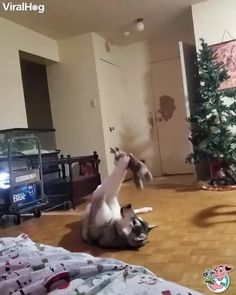Cats are often regarded as enigmatic creatures, their subtle communication leaving us curious about their interactions. When two cats meet or engage with one another, they speak a language rich in gestures, vocalizations, and behaviors. Decoding their communication can offer us insight into their emotions, intentions, and relationships. So, what exactly is the other cat saying?
Vocal Expressions: The Sound of Intentions
Unlike dogs, cats rarely use vocalizations to communicate with each other. However, when they do, the meaning is often tied to the situation:
- Meows: Though primarily directed at humans, a short, soft meow between cats might signal a friendly greeting.
- Growls and Yowls: These deeper, more intense sounds are used during confrontations or territorial disputes. They are warnings that can escalate into physical altercations if ignored.
- Chirps and Trills: These high-pitched sounds are often heard between a mother cat and her kittens, expressing reassurance or guiding behavior. Adult cats may also chirp as a friendly invitation to play or interact.
Body Language: The Silent Conversation
While sounds play a role, cats rely heavily on body language to express themselves. Their posture, tail movements, and ear positions are the primary “words” in their feline dialogue:
- Tail Movements: A high, upright tail signals confidence and friendliness, often seen when a cat approaches another in a non-threatening manner. Conversely, a puffed-up tail indicates fear or aggression, serving as a warning to stay away.
- Ears and Eyes: Forward-facing ears show curiosity and interest, while flattened ears warn of anger or fear. Narrowed eyes or a slow blink may indicate relaxation or trust, often a sign of mutual respect between two cats.
- Whiskers: Relaxed whiskers signify calmness, whereas forward-angled whiskers suggest focus or curiosity. If whiskers are pulled back, the cat might feel threatened or defensive.
- Posture: A crouched stance with fur raised along the back shows a defensive reaction, while a loose, stretched posture indicates ease and comfort in the presence of another cat.
Physical Interactions: Touch as Communication
When cats rub against each other or engage in grooming, they’re sharing more than affection—they’re exchanging scents. This behavior strengthens social bonds and creates a shared “group identity.” Playful batting or gentle wrestling, common among kittens and friendly adults, reflects trust and an invitation to interact.
Hissing and Growling: The Language of Boundaries
When a cat hisses, growls, or swats, it’s communicating a clear message: back off. These behaviors are often observed when a cat feels its personal space or safety is threatened. Respecting these boundaries is crucial to preventing conflicts between cats.
The Role of Scent: Unseen Communication
Beyond visible and audible signals, cats rely heavily on scent to convey information. By rubbing their faces or bodies against each other or objects, cats leave behind pheromones that communicate their presence, mood, and even reproductive status. For cats, understanding the “scent story” is as natural as reading a book for humans.
The Bigger Picture
Understanding feline communication is essential for fostering harmony among cats, whether they’re in your home or interacting in the wild. By paying attention to their vocalizations, body language, and behaviors, we can better interpret what the other cat is saying and ensure their needs are met.
In the end, while cats may seem aloof, their communication is rich and meaningful. All it takes is patience and observation to unlock the secrets of their silent yet expressive world.






